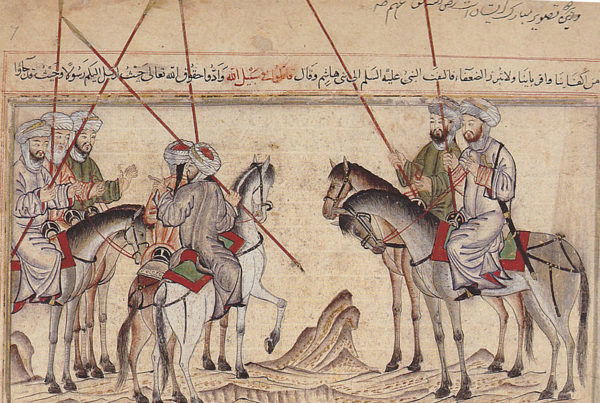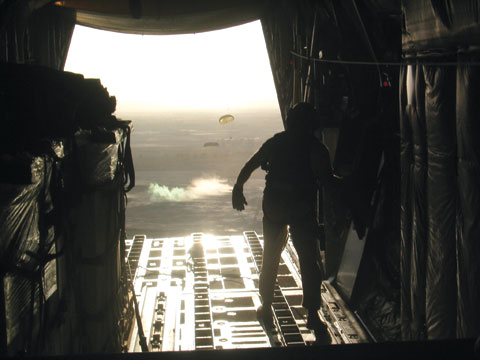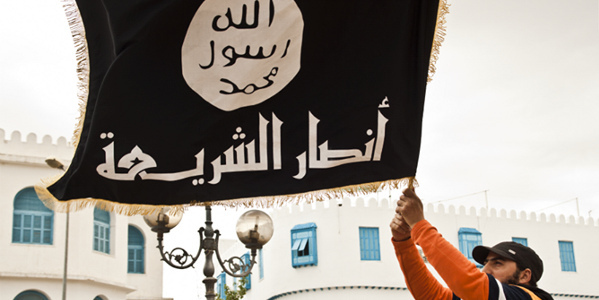 As the United States-led European coalition has reached a diplomatic deal with Iran, with a reduction in economic and military sanctions in return for a supposedly verifiable cap on Iran’s nuclear program, opponents of such a deal are concerned that the Obama administration and its allies just don’t “get” Iran’s real agenda for reaching such a settlement. Ilan Berman’s “Iran’s Deadly Ambition: The Islamic Republic’s Quest for Global Power” is an attempt to show what Iran is really up to and provide a “corrective.” Mr. Berman, vice president of the American Foreign Policy Council in Washington, D.C., has written extensively on Iran, and is the author of the 2007 book “Tehran Rising: Iran’s Challenge to the United States.”
As the United States-led European coalition has reached a diplomatic deal with Iran, with a reduction in economic and military sanctions in return for a supposedly verifiable cap on Iran’s nuclear program, opponents of such a deal are concerned that the Obama administration and its allies just don’t “get” Iran’s real agenda for reaching such a settlement. Ilan Berman’s “Iran’s Deadly Ambition: The Islamic Republic’s Quest for Global Power” is an attempt to show what Iran is really up to and provide a “corrective.” Mr. Berman, vice president of the American Foreign Policy Council in Washington, D.C., has written extensively on Iran, and is the author of the 2007 book “Tehran Rising: Iran’s Challenge to the United States.”
Written as a polemic to expose what the author sees as the nefarious intentions of Iran’s worldwide ambitions and the likely consequences to Israel’s security if Iran were to acquire nuclear weapons as a result of such a flawed deal, Mr. Berman’s analysis is sound in much of its diagnosis. To understand Iran’s true intentions, Mr. Berman points out, it is first necessary to understand what underpins its global agenda. This is based on three primary fronts.
The first is sectarian in nature, as Iran “views itself as the vanguard of the so-called Shia Crescent in the Middle East and the ideological champion of the interests of the beleaguered Shia minority in the Sunni-dominated Muslim world.” This agenda is expressed in Tehran’s active sponsorship of its Lebanese Hezbollah terrorist proxy, which not only operates in Lebanon and conducts cross-border warfare against Israel, but also operates in neighboring Syria where its forces support the beleaguered Assad regime in the country’s protracted civil war. This is also expressed in attacks by Hezbollah’s terrorist operatives on behalf of its Iranian patron against Israeli targets in faraway countries such as Argentina, Bulgaria, India and Thailand. Iranian agents also help direct an assortment of Shiite insurgent groups in neighboring Iraq, Bahrain and Yemen, where Saudi Arabia, one of the leaders of the Sunni world, is currently engaged in a major military campaign against the Shiite Houthi insurgents, who are threatening to take over the beleaguered Sunni majority country.
The second front for Iran’s worldwide ambitions is pan-Islamist in nature, with Tehran’s leaders, spearheaded by Ayatollah Ali Khameini, believing they are fulfilling Ayatollah Ruhollah Khomeini’s revolutionary agenda to spread their version of Islam “as the natural ideological leader of the Islamic world and the rightful inheritor of the mantle of the Prophet Muhammad.” This is expressed in Iran’s attempt to establish its own “security condominium” through its activities to dominate geostrategically important Middle Eastern countries such as Lebanon, Syria, Iraq, Yemen and others, “thereby becoming the region’s geopolitical center of gravity.” Here, Mr. Berman points out, Iran has met fierce resistance, especially by Saudi Arabia, “Sunni Islam’s most important player,” and other major Sunni countries, such as Egypt, which had recently uncovered a Hezbollah terrorist cell operating in its country.
In its third front, Mr. Berman writes that “the Iranian regime has embraced the language of Third World populism, using it in its efforts to enlist countries [and their local ‘popular’ movements] in Latin America and Africa in a shared revisionist agenda on the global stage.” It is in this front, in particular, where Iran directly threatens the United States, for example, by supporting anti-American regimes such as Venezuela and Bolivia.
Although, overall, the book does a masterful job of deconstructing Iran’s ambitions, Mr. Berman gives too little attention to what actually occurs on the ground. This is particularly the case with his analysis of Iran’s intervention in Syria, where one might disagree with his description of Syrian dictator, Bashar Assad, as “locked in a protracted war against his own people,” since much of the insurgency against his regime is being directed by the Islamic State and al-Nusra forces — which the United States is currently directly opposing, as well. This is not intended to justify the Assad regime’s brutality against the Syrian people, but that the true genocidal nature of the jihadi opposition to the regime needs to be highlighted as well.
What makes Mr. Berman’s book especially noteworthy, however, is his discussion of the dilemmas facing Western countries in their dealings with Iran, namely, whether their “outreach toward Tehran makes good strategic sense.” As he writes, “For nearly a quarter-century, Western capitals have been awash in hopes that, with the proper mix of economic and diplomatic incentives, it might be possible to alter the Iranian regime’s aggressive, revisionist worldview.” While arguing that reaching a nuclear deal with Iran will not likely “change this calculus,” Mr. Berman concludes that “a lasting reconciliation between the Islamic Republic and the West is not in the cards, and for good reason: Western culture and intellectual influence represents a mortal threat to the absolutist, activist political Islam that animates the regime in Tehran.” Whether or not the Obama administration succeeds in overcoming congressional opposition to finalizing the nuclear deal with Iran, the issues raised in Mr. Berman’s book highlight the dilemmas and conflicts that need to be carefully considered in managing the relations between the West and the Islamic Republic.
This review initially appeared in The Washington Times. Reprinted by permission.








